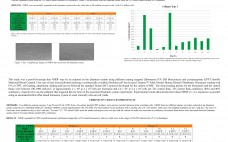The cell therapy industry (CTI) is poised to grow rapidly over the next decade, treating millions of patients and generating annual revenues into the tens of billions of US dollars (1, 2). To meet that high-growth demand, large CTI system manufacturers (e.g., Corning, Nunc/Nalgene, and GE Healthcare) and leading contract manufacturing organizations (CMOs, such as Lonza) are developing and integrating new upstream technology platforms such as gas-permeable membranes and microcarrier-based bioreactors to significantly increase therapeutic cell culture productivity. As those…
Cell/Gene Therapies
Advocating an Evolution
In a 2006 report, the US Department of Health and Human Services hailed regenerative medicine as “the vanguard of 21st century healthcare” and “the first truly interdisciplinary field that utilizes and brings together nearly every field in science” (1). To fuel support for regulatory, legislative, and reimbursement initiatives in this new therapeutic class, a small group of scientists, life science business executives, patient advocates, and other experts formed the Alliance for Regenerative Medicine (ARM, http://alliancerm.org). Starting with 17 charter members,…
Culture of Normal Human Dermal Fibroblast Cells in a Functionally Closed Automated Cell Expansion System
The Quantum Cell Expansion System is a functionally closed and automated hollow-fiber bioreactor system that is designed to expand both adherent and suspension cells in a reproducible manner. The hollow-fiber membrane requires a coating agent to help facilitate cellular adherence when culturing an adherent cell type such as MSCs. Pooled human cryoprecipitate (CPPT, Bonfils Blood Center) was examined as an alternative to FN because it is a rich source of extracellular matrix components, including fibrinogen (Freedman, 2010), and also because…
Regenerative Medicine
The year 2011 may be seen as one in which regenerative medicine entered its adolescence. Public attention — from investors to desperate patients — finally turned toward this nascent industry with something other than skepticism or unrealistic expectations. The FDA’s approval of Dendreon’s Provenge cellular immunotherapy switched on the spotlight, and cell therapy companies suddenly faced a barrage of questions about cost, manufacturing issues, product development, and patient access. US Policy: In May 2011, US representatives Brian Bilbray…
Cell Therapies Roundtable: Building the Pillars to Success
In order to deliver cell-based therapies on a commercial scale, cell therapy companies and suppliers must form partnerships in order to overcome existing manufacturing, regulatory, and analytical challenges. Four leading cell therapy experts discuss what is and what has to be done in order to accomplish this objective.
Utilization of Allogeneic Liver Progenitor Cells Expanded from Adult Healthy Human Livers to Treat Genetic Disorders
Promethera Biosciences presents this case study detailing how HHALPC from normal adult livers can be purified, expanded In vitro and utilized to successfully treat patients with Crigler-Najjar disease.
Moving Cell Purification Methods from Bench to Bedside
The technological innovations and improvements to cell purification and other cellular analysis-based processes have dramatically increased sample throughput rates resulting in an improved ability to treat cancer, autoimmune diseases, and a range of applications in regenerative medicine.
Tackling the Challenges in the Manufacturing of Cell-Based Therapies
While cell-based therapies offer huge potential, significant challenges, including GMP manufacturing, scaling-out, and delivery must be addressed and overcome in order to justify and successfully autologous and allogeneic provides to the market.
From R&D to Commercialization: Challenges for Cell Therapy Manufacturing
In order for cell therapy companies to successfully evolve from R&D to commercialization, there are many lessons learned from the protein business that can be applied to the cell therapy market.
Implementing Custom Single-Use Solutions for Cell Therapy Production
Cellular therapy continues to expand and gain momentum, as evidenced by the growing number of companies and clinical trials in the field each year. Early potential therapies were developed solely by investigators without communication or input from manufacturing experts. That communication gap led to numerous setbacks as potential products were developed without roadmaps for feasible manufacturing scale-up (or scale-out). Contributions from members of the cell therapy community over the past few years have significantly improved the situation in the form…



